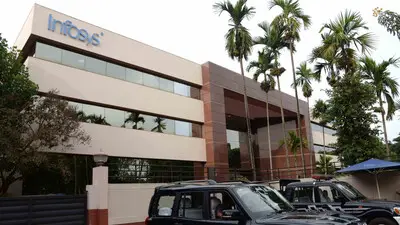Recommended Stories
The government, however, warned that the price rise of non-food items would continue to pose problems in the days ahead.
Food inflation, as measured by Wholesale Price Index (WPI), was 8.53 per cent in the previous week. It had stood above 21 per cent in the last week of April 2010.
"The current trend in food inflation is welcome and we hope to see further moderation in food inflation in the coming weeks... However, there are concerns on price momentum in non-food articles," Finance Minister Mukherjee said.
India is estimated to have achieved record foodgrain production of 235.88 million tonnes in the 2010-11 crop year (July-June).
This is on the back of all-time high output of wheat, pulses and maize. Apart from foodgrains, the country has produced a record quantity of oilseeds -- 30.25 million tonnes.
His reaction came in response to the decline in food inflation numbers to their lowest level since separate data for the segment was introduced in late 2009.
During the week under review, prices of pulses declined by 9.05 per cent year-on-year, while vegetables became cheaper by 3.64 per cent. Potatoes also came down by 3.58 per cent.
"Sustained high non-food primary prices are creating cost-push inflationary conditions in the manufacturing sector.
Thus, even though food inflation is declining, the concern on higher core inflation remains," Mukherjee said
He, however, exuded hope that recent monetary policy measures like the Reserve Bank`s hike in policy rates, would help in addressing the issue.
The RBI had hiked interest rate by 50 basis points earlier this month to tame demand and control inflation. It was the ninth hike in short-term lending and borrowing rates made by the central bank since March, 2010.
Headline inflation was 8.98 per cent in March, much above the government`s comfort zone of around 5 per cent. In its monetary policy for 2011-12, the RBI had projected inflation to average 9 per cent during the first half of this fiscal before moderating to around 6 per cent by the year-end.
Though rising food prices were the main contributor to inflationary pressure in 2010, recent months have witnessed a rise in prices of core (non-food) items. Core inflation was above 7 per cent in March.
During the week under review, inflation in non-food primary articles was 28.62 per cent during the week under review.
Fibre prices rose by almost 86 per cent and minerals by 11.95 per cent. Fuel and power were up 14.91 per cent.
Core inflation is expected to grow further in the near future as the government is likely to soon announce a hike in retail prices of petroleum products.
"Fall in food inflation is on expected lines and the rate will remain moderate unless the coming monsoon fails. But global commodity prices, especially of oil, and their impact in the country have to be monitored," Crisil Chief Economist D K Joshi said.
Global oil prices continue to hover around USD 100 per barrel on account of the civil war in Libya, a major exporter and OPEC member, though it is down from the two-and-half high of over USD 120 per barrel touched in April.
While pulses and vegetables showed a moderation in prices during the week ended April 30, other food items became more expensive year-on-year.
Cereals became dearer by 4.54 per cent, while fruit prices were up by over 35 per cent on an annual basis. Onions grew 12.42 per cent more costly on an annual basis.
Milk was also costlier by 4.3 per cent in the week ended April 30 as compared to the corresponding seven-day period last year. Eggs, meat and fish were also up by 4.62 per cent.
"The food inflation rate is gradually showing a trend toward normalisation. While this is encouraging, it is important to monitor the movement going forward. Usually rate spikes are seen in the post-monsoon period due to seasonality of agricultural output and supply side inefficiencies," Deloitte, Haskins & Sells Director Anis Chakravarty said.












